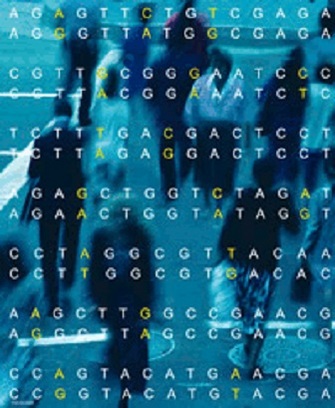« Prev Next »
One common research trend in the elucidation of the genetic causes of complex disease is use of the genome-wide association study (GWAS). This method capitalizes on relatively new technology that allows an individual's entire genome to be searched for hundreds of thousands of known genetic variations, such as single nucleotide polymorphisms (SNPs), rearrangements, and copy number changes. Typically, when considering a particular disease, two large groups of individuals are genotyped using GWAS: a group in which the disease is present, and a disease-free control group. If a particular genetic variation is found to be present in a large proportion of the affected individuals but not in a similar proportion of the control individuals, that variation is assumed to be associated with the disease under study. However, not all affected individuals will have this variation, nor will all unaffected individuals lack it; in other words, it is merely more likely that the variation is present in affected individuals. This lack of a definitive link between genetic variation and disease is just one of several complicating factors associated with the study of complex conditions.
Variation as an Indicator of Disease Risk

In the overwhelming majority of cases, the genetic variation found to be associated with a complex condition is not in a coding region of the genome; therefore, this variation does not involve a particular gene that might be involved in the development of the condition. Rather, the implicated genetic variation may be near the causative gene, it may be part of a regulatory element for the causative gene, or it may be an artifact. Researchers have documented associations of such genetic elements with many different complex disorders, including heart disease, diabetes, mental illness, and certain cancers. Unfortunately, while these studies are certainly interesting and warrant further investigation, the information derived through these efforts currently has little applicability to patient care.
Despite this lack of applicability, many people remain curious as to whether their genomes harbor any of the genetic changes associated with complex disease. This demand has led to the formation of several companies that are willing to provide such information for a fee of about $1,000 (in American funds). But how should these companies' findings be interpreted? When considering results from web-based genotyping services like deCODEme, 23andMe, and Navigenics, it is important to remember that the statistics regarding SNP-disease associations do not apply to single humans, but rather to large populations. These companies, therefore, are only able to provide a population risk for developing various conditions.
So, what does this mean for an individual? For health care planning, this type of SNP data can currently be used for relatively crude genotype-phenotype comparisons. Of course, the ultimate goal of genomic medicine is to determine the precise probability that an individual will develop a particular disease given his or her genome, environment, and SNP information. This is not yet possible, nor will it be until researchers develop a much deeper understanding of single genomes and their interactions with the environment.
Practical Uses of SNP Data
Does this situation mean that SNP data are useless? Not completely. Certain SNPs have exceptionally strong effects on traits and disease risk, and they can therefore have real predictive utility. Although these SNPs do not indicate whether someone is 100% fated to have a certain disease, they can help point out aspects of a person's environment or behavior that put that person at greater risk. Thus, $1,000 might buy a good reason for an individual to modify his or her behavior in a direction that is beneficial.
Furthermore, there are some disorders for which genetic and environmental risk factors are well-defined. In these cases, better estimates of an individual's risk can be made. For example, in a recent study using Crohn's disease (CD) as a model for complex disease, researchers were able to develop algorithms to calculate an individual's estimated risk for CD based on personal genetic and environmental factors. Calculation of the probability of developing a multifactorial disease like CD requires researchers to make an estimation of the "value" of each genetic and environmental risk factor to be considered, and to then develop a statistical formula that models the contribution of each of these factors, as well as the assumed interaction between the factors. Thus, in the CD study, the authors based their model of risk on three factors: an environmental variable (smoking), the genotype at a specific susceptibility gene (CARD15), and family history (which accounts for unknown genetic factors). The resulting risk estimates apply to first-degree relatives of patients with CD and allow for the calculation of an individual's estimated likelihood of developing the disorder, along with empirical information about the potentially risk-reducing effects of smoking cessation (Lewis et al., 2007).
The Future of Determining Disease Risk
Thus, while individuals can currently buy personal SNP profiles and will soon be able to order information regarding their complete genomic sequence, this information is not sufficient to tell the full story of disease risk. Much more work needs to be done to isolate additional data on genetic and epigenetic variation and environmental contributors to complex conditions before we can get a truly accurate, and clinically useful, picture of an individual's disease risk.






























